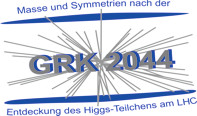Study on Meteorites using the GeMSE spectrometer
GeMSE, the Germanium Material and Meteorites Screening Experiment, is our low-background gamma spectrometer, located in the Vue-des-Alpes tunnel (at 620 m.w.e. depth) in the Swiss Jura mountains. Our group mainly uses it to identify low-background materials for dark matter detectors, however, as its name suggests, already from its inception, the study of meteorites was on its scientific agenda. This work is done in collaboration with the group of Prof. Beda Hofmann at the University Bern and the Museum for Natural History Bern, who has access to one of the world's largest collection of meteorites.
In the study "Radionuclide activities in recent chondrite falls determined by gamma‐ray spectrometry: Implications for terrestrial age estimates" which has just been published in Metoritics & Planetary Science, we use short-lived radio-isotopes, which are produced by cosmic ray activation, to determine the time of eight meteorite's falls and two finds on Earth. We could show that the studied meteorites were formerly part of small‐ (r < 25 cm) to medium‐sized (r < 65 cm) objects. We could also show that a meteorite found close to the montain Mürtschenstock in Switzerland fell before 1999 and is thus unrelated to an optical observation in 2005. Interestingly, the 137Cs contamination in this sample is much higher than in other meteorites which were found in Oman -- most likely due to the fall-out of the Chernobyl accident.
More information:
- The GeMSE low-background spectrometer
- Åke V. Rosén, Beda A. Hofmann, Moritz von Sivers, Marc Schumann,
Radionuclide activities in recent chondrite falls determined by gamma‐ray spectrometry: Implications for terrestrial age estimates
Meteoritics & Planetary Science 55, 149 (2020)





